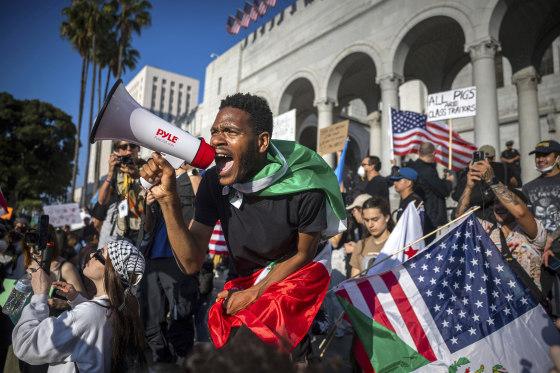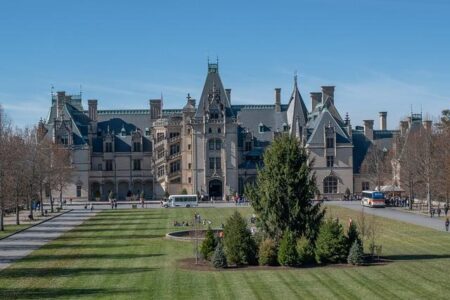Los Angeles: A Beacon of Immigrant Advocacy and Resistance
Los Angeles’ Legacy as a Center for Immigrant Rights Movements
Renowned for its rich cultural mosaic, Los Angeles has historically served as a pivotal arena for immigrant activism. The city’s diverse population has continuously influenced its political and social dynamics, dating back to the early 1900s when Mexican and Filipino workers united to challenge oppressive labor conditions. Decades later, in the 1990s, the city became a hotbed of resistance against Proposition 187, a controversial initiative aimed at denying undocumented immigrants access to essential public services. These moments exemplify LA’s enduring dedication to advocacy, where grassroots groups, faith-based organizations, and community coalitions have transformed public venues into platforms for demanding justice, equity, and inclusion.
Several elements have fueled this persistent activism:
- Los Angeles’ role as a primary entry point for immigrants,hosting one of the nation’s largest foreign-born populations.
- The intertwined history of labor rights and immigrant struggles, creating a foundation for collective action.
- Dynamic leadership emerging from a variety of ethnic neighborhoods.
- A tradition of intersectional activism that connects immigration issues with broader racial, economic, and social justice causes.
| Era | Important Movement | Outcome |
|---|---|---|
| 1930s | Farm Labor Strikes | Raised awareness of workers’ rights |
| 1990s | Opposition to Proposition 187 | Strengthened coalition networks |
| 2010s | Sanctuary City Initiatives | Influenced local immigration policies |
How Trump’s Immigration Policies Reshaped Los Angeles Communities
The Trump administration’s stringent immigration measures profoundly impacted Los Angeles, a city deeply woven with immigrant narratives. Policies such as the expansion of deportation priorities and attempts to terminate DACA created widespread fear and instability among immigrant populations. Families faced the trauma of separation, while increased Immigration and Customs Enforcement (ICE) operations disrupted daily life in neighborhoods heavily reliant on immigrant labor and culture. This climate of apprehension galvanized unprecedented civic engagement, with residents rallying to defend their rights and community cohesion.
Moreover,these policies intensified existing economic and social inequalities. Many immigrants encountered job insecurity and restricted access to healthcare and education, prompting local authorities to implement protective measures and support services. The following table highlights some of the critical effects and community responses during this turbulent period:
| Effect | Affected Group | Community Response |
|---|---|---|
| Surge in deportations | Immigrant households in East Los Angeles | Establishment of legal aid centers and emergency shelters |
| Threats to DACA recipients | Young immigrants known as Dreamers | Organized mass demonstrations and educational walkouts |
| Escalated fear of ICE raids | Communities in Central LA | Conducted “know your rights” seminars and enacted sanctuary policies |
Community Mobilization and Leadership at the Grassroots Level
In Los Angeles’ diverse neighborhoods, transformative change has been propelled by grassroots leaders, many of whom are immigrants themselves. These organizers have forged strong community ties through culturally sensitive outreach and consistent engagement, turning everyday locations such as places of worship, schools, and local markets into centers of activism.Their approach emphasizes personal interaction and culturally tailored communication, ensuring marginalized voices are heard and empowered.
Effective tactics include:
- Hosting bilingual educational sessions to inform residents about their legal rights and civic participation.
- Utilizing social media channels in multiple languages to quickly share updates and mobilize support.
- Collaborating with neighborhood businesses to provide safe venues for dialog and organizing efforts.
| Role | Contribution | Illustrative Example |
|---|---|---|
| Community Organizer | Coordinates protests and community meetings | Led monthly citywide immigrant rights demonstrations |
| Local Entrepreneur | Provides event spaces and resources | Hosted sanctuary policy workshops at a neighborhood bookstore |
| Religious Leader | Offers moral guidance and legitimizes activism | Organized interfaith vigils promoting solidarity |
Long-Term Advocacy Approaches and Policy Influence in Los Angeles
The sustained success of immigrant-led advocacy in Los Angeles stems from a thorough strategy that merges grassroots activism with targeted policy engagement. Community groups have prioritized building coalitions that bring together immigrant populations, labor unions, and civil rights organizations, creating a unified front capable of exerting continuous pressure on policymakers.This unity is reinforced by culturally aware outreach efforts that overcome language barriers, ensuring the community’s voice remains strong and clear.
Additionally, activists employ data-informed storytelling, blending personal experiences with statistical evidence to illuminate immigrants’ economic contributions and the challenges they face under restrictive federal policies.
Key components of effective advocacy include:
- Legislative tracking: Monitoring local and state government actions to swiftly adjust advocacy tactics.
- Voter mobilization: Encouraging immigrant communities to engage in elections to influence political representation.
- Legal challenges: Collaborating with legal experts and nonprofits to contest unjust laws in court.
| Approach | Primary Activity | Result |
|---|---|---|
| Coalition Building | Unify diverse groups | Amplified community influence |
| Data-Driven Narratives | Integrate stories with research | Raised public consciousness |
| Voter Engagement | Register and educate voters | Shifted local political dynamics |
Conclusion: Los Angeles as a Model of Immigrant Resilience and Civic Action
As Los Angeles continues to lead immigrant advocacy efforts, its protest movements offer a window into the broader national conversation on immigration, identity, and policy reform. The city’s robust response to the Trump administration’s restrictive immigration agenda highlights a community steadfast to resist marginalization and uphold a legacy of civic participation rooted in diverse immigrant experiences. Examining LA’s activism provides valuable lessons on resilience and the power of collective action in shaping inclusive urban futures amid political division.




